
Place-driven Practice
Running for just two weeks across various locations in greater Walyalup, the Fremantle Biennale: Sanctuary, seeks to invite artists and audiences to engage with the built, natural and historic environment of the region.
Titled rīvus, meaning Latin for stream, the 23rd Biennale of Sydney is an ode to rivers and waterways both salt and fresh. Across five key venues—Art Gallery of New South Wales, Museum of Contemporary Art, The Cutaway, National Art School and Pier 2/3 at Walsh Bay Arts Precinct—the Biennale features 89 artists and participants (for not all of the exhibiters are living entities) and over 330 artworks. Through this abundance, and taking water literally and metaphorically, the Biennale shows not only the relationship of humans to the world, but also the inverse: the relationship of non-humans to the world. This is our round up of what you can’t miss at this year’s Biennale.
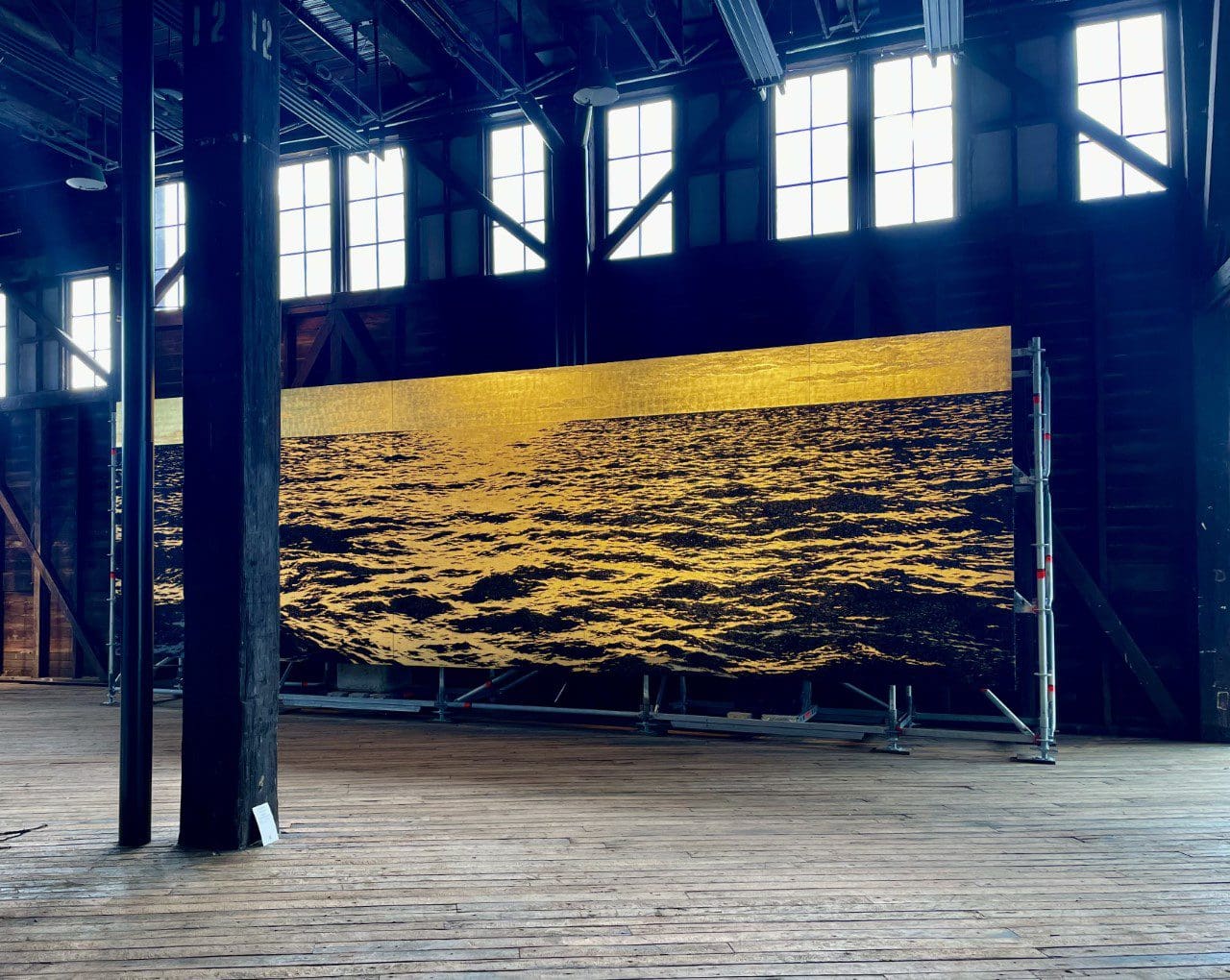
Yoan Capote at Pier 2/3, Walsh Bay Arts Precinct
Standing at the entrance of the newly opened Pier 2/3, at first this work by Cuban artist Yoan Capote looks like a large-scale sepia photograph of the sea—but walk closer, and you’ll see it’s an intricately structured form of gold and black, created with 24k gold leaf, oil, nails and fishhooks. Here water is a source of sustenance, but also isolation—Cuba, where the artist lives and works, is a country surrounded by the sea and isolated geographically, but also politically. In an ideological struggle with the United States for the last 60 years, thousands of Cubans have died attempting to cross the waters from Cuba to Florida.

Ana Barboza and Rafael Freyre at The Cutaway
This tremendous, yet also somehow beautifully understated, installation looks at the symbolic importance of water in Peru’s diverse wetland ecosystems and cultural heritage. Ana Barboza and Rafael Freyre, who both live and work in Lima, Peru, have created a work that draws upon ancestral knowledge of the desert ecosystem, catching water from the air that’s purified. You can walk inside and around the incredible installation, which, despite drawing on ancient canal systems created by pre-Colombian society, feels incredibly innovative in its design and beauty. And perhaps it’s the subject matter that also feels potently contemporary: water security is an issue of our time.
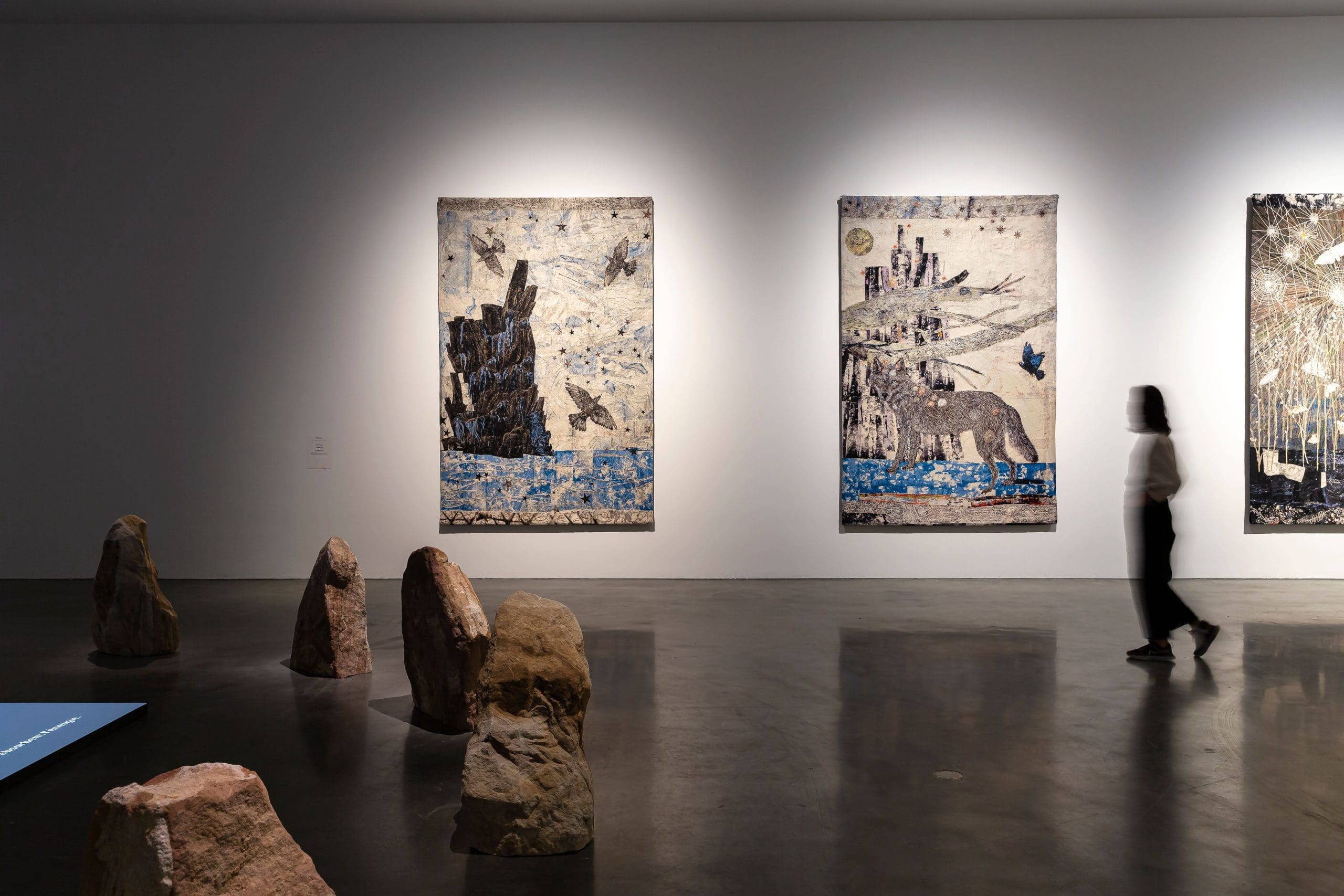
Kiki Smith at the Museum of Contemporary Art
Kiki Smith is our cover artist for our March/April ‘Biennale Special’ issue, and her work at the Museum of Contemporary Art takes tapestry to a new level. The German-born, New York-based artist is showing five of her massive, intricate tapestries that are created using specialised jacquard loom weaving technology. They feel almost medieval in form, but completely spiritual, almost mystic, in their nature and the scenes they depict, from birds flying to a lone wolf. Smith has never had a substantial viewing in Australia, and images don’t do this mystical ode to nature justice.
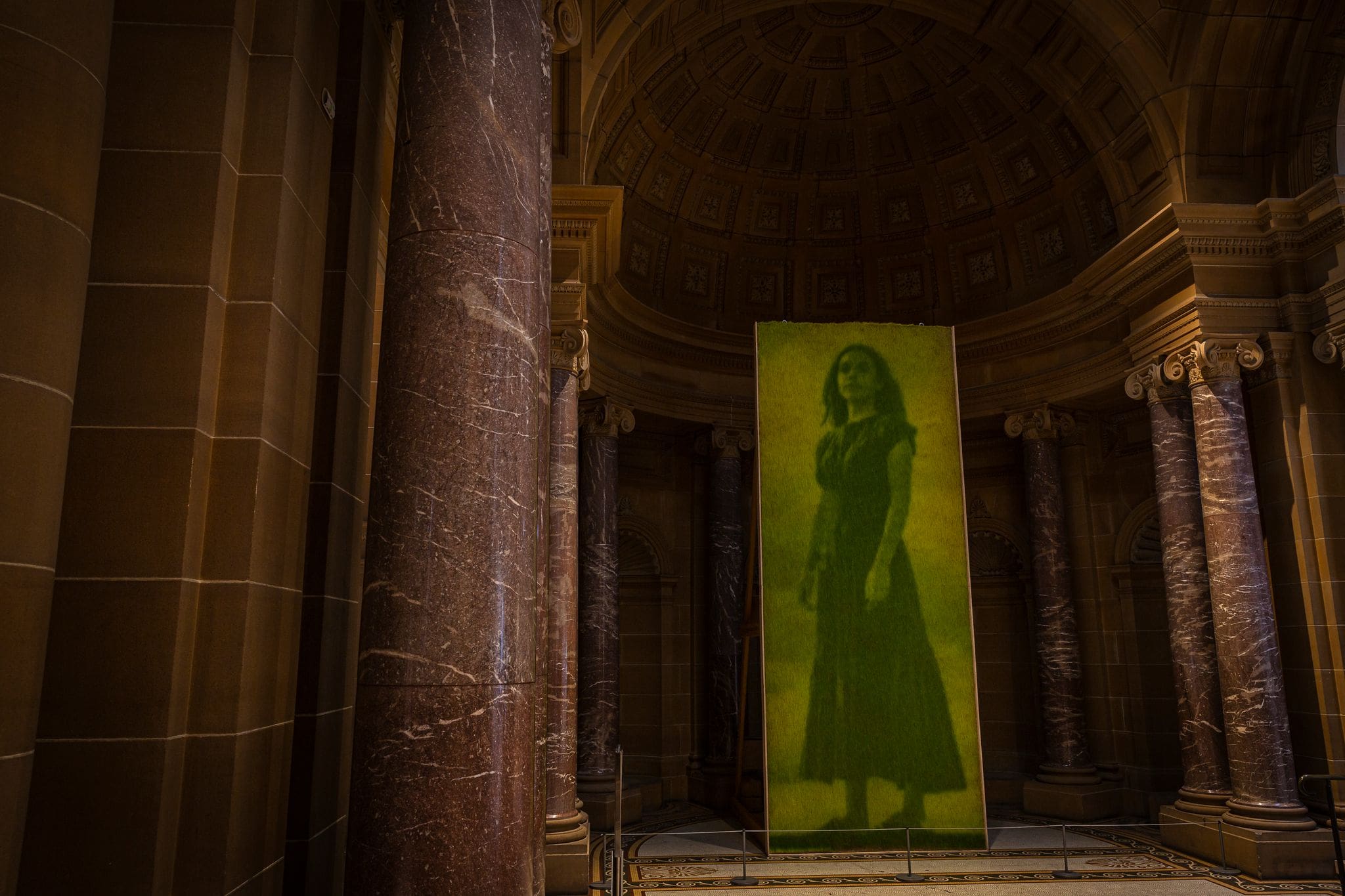
Ackroyd and Harvey at the Art Gallery of New South Wales and The Cutaway
Positioned just inside the entry of the Art Gallery of New South Wales are two five-metre-tall portraits created entirely from grass. Grown from seeds, these portraits are by UK-based duo Ackroyd & Harvey (who are featured in our March/April issue), and the pair also have two more works showing at The Cutaway. Working at the intersections of art, activism, biology and history, Ackroyd & Harvey have been creating grass-based works for decade, using the process of photosynthesis to not only create, but to speak about the urgent ecological issues facing our planet.
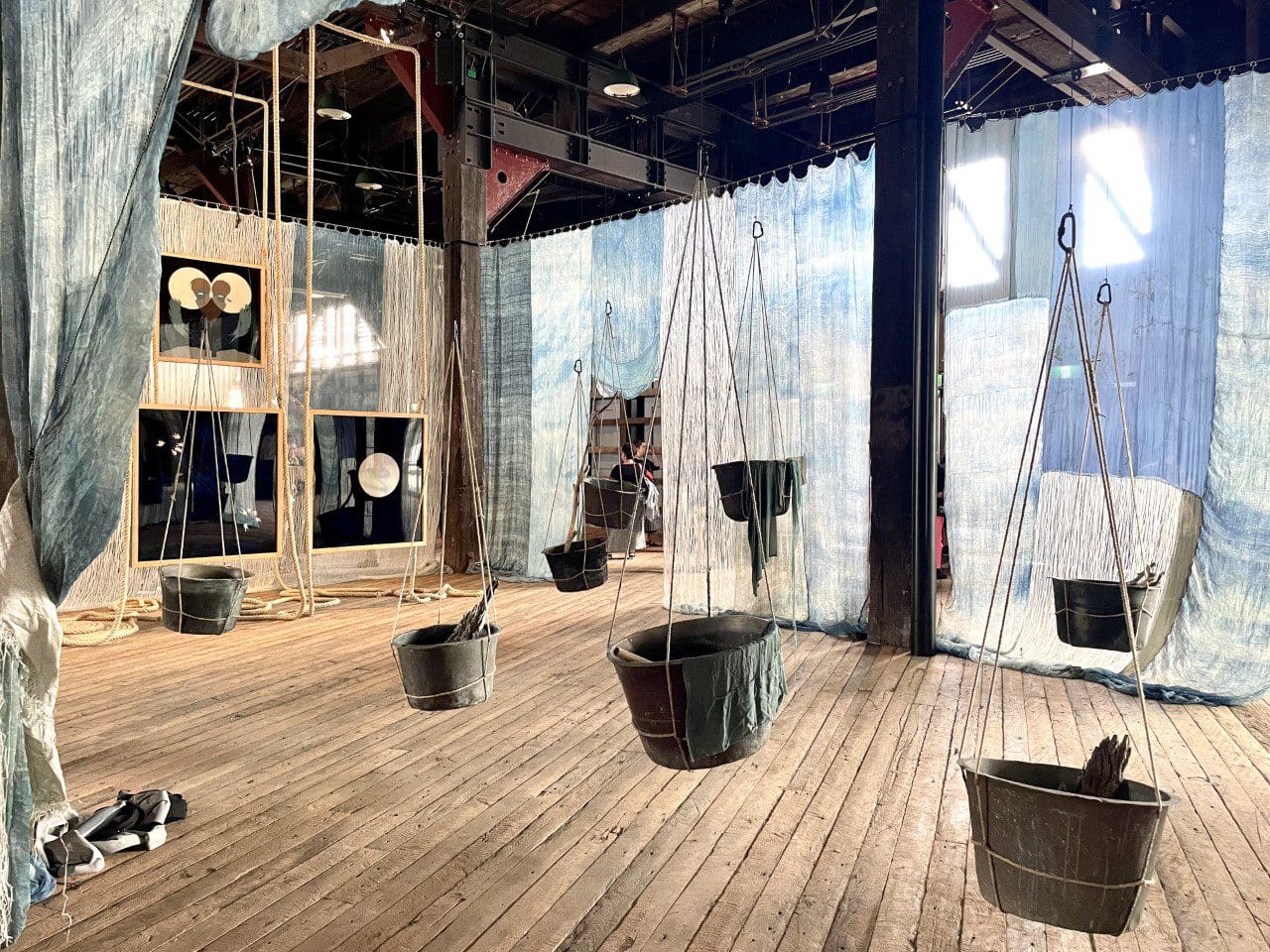
Clare Milledge at Pier 2/3, Walsh Bay Arts Precinct
Walking around Clare Milledge’s installation Imbás: a well at the bottom of the sea at Pier 2/3, one glimpses a series of long, hanging silk tapestries—step inside, and there’s a series of glass paintings and nine hanging cauldrons. Ethereal and folkloric, it draws on the Story of Sinnan, an Old Irish story about the forming of the river Sinnan/Shannon, speaking of floods and waterways, but also how the bottom of the sea can provide artistic inspiration. And while this story grounds the work, it’s the experience of walking through the installation that’s beguiling. A long list of collaborators brought this work to life, continuing Milledge’s multidisciplinary examination of ecology and art, especially through the figure of the artist-shaman.

National Committee of the Friends of Myall Creek and local First Nations Community at the National Art School (with Artspace)
At the entrance of one of the galleries at the National Art School hangs a wondrous possum skin cloak. A form of traditional clothing, as well as personal signifiers of identity and connectedness to Country, this particular cloak has 30 collaborators involved in its creation, creating a startling image on the inside of the cloak. It is also one of the first cloaks to feature non-Indigenous hands. Established in 1998, The Friends of Myall Creek are a group who “raise awareness of the Myall Creek Massacre, to understand the truth of our shared history . . . On 10 June 1838, 28 Aboriginal women, children and older men were murdered in an unprovoked and premeditated massacre.” It is an ongoing program of learning, sharing and truth-telling.
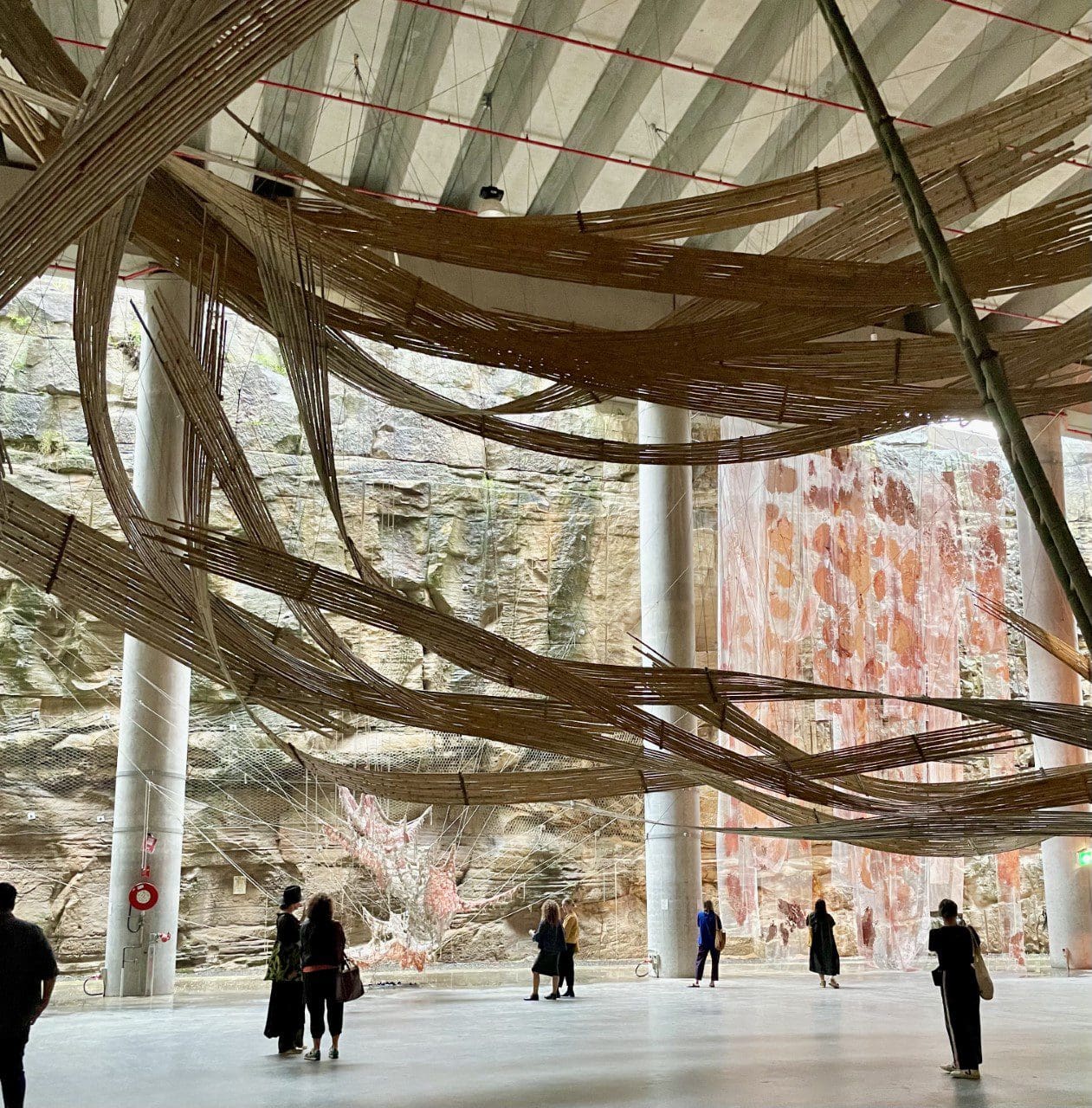
Cave Urban at The Cutaway
Fastened to the ceiling of The Cutaway is a magnificent architectural installation by Cave Urban, creating what feels like mammoth bamboo currents of water, perpetually adrift atop the works and visitors at The Cutaway. Cave Urban is a Sydney-based studio formed by artists, architects and designers and is known for large-scale installations. Here they draw upon the flow state of water, interrogating the colonial concept of the dam/drain and favouring a generative, feedback-like idea of water. It feels like serenely rolling stream, where moments of circularity and tussle create a snaking, pulsing pattern.

Marjetica Potrč with Uncle Ray Woods at the Museum of Contemporary Art
On the first floor of the MCA is a life-size architecture structure, bringing to life an astounding collaboration between Slovenian artist Marjetica Potrč and Wiradjuri artist Uncle Ray Woods. While the drawing and mural components tell the struggles of two rivers in different parts of the world—the Soča River in Slovenia and the Lachlan River in Australia, in New South Wales—the central structure is timber house bound together with rope. Inspired by palafitas, a type of housing developed by communities in the Amazon region on stilts, it speaks to a social agreement between humans and waterways. The two artists are both concerned with ongoing capitalist privatisation of resources and natural entities—and here water is the focus.
23rd Biennale of Sydney: rīvus
Various Sydney venues including: Art Gallery of New South Wales, The Cutaway, Circular Quay, Museum of Contemporary Art Australia, National Art School in partnership with Artspace, The Rocks and Walsh Bay Arts Precinct
12 March—13 June